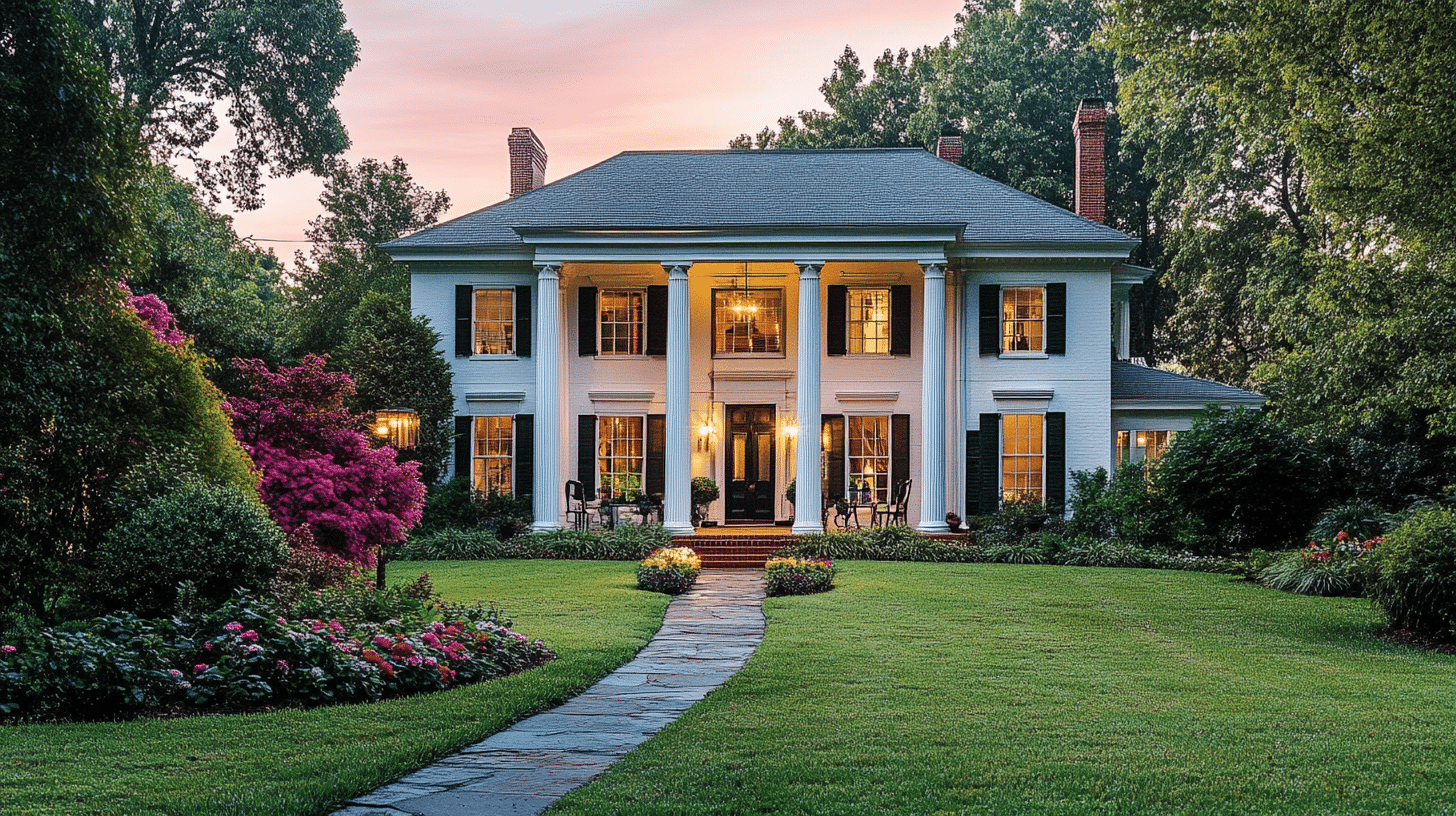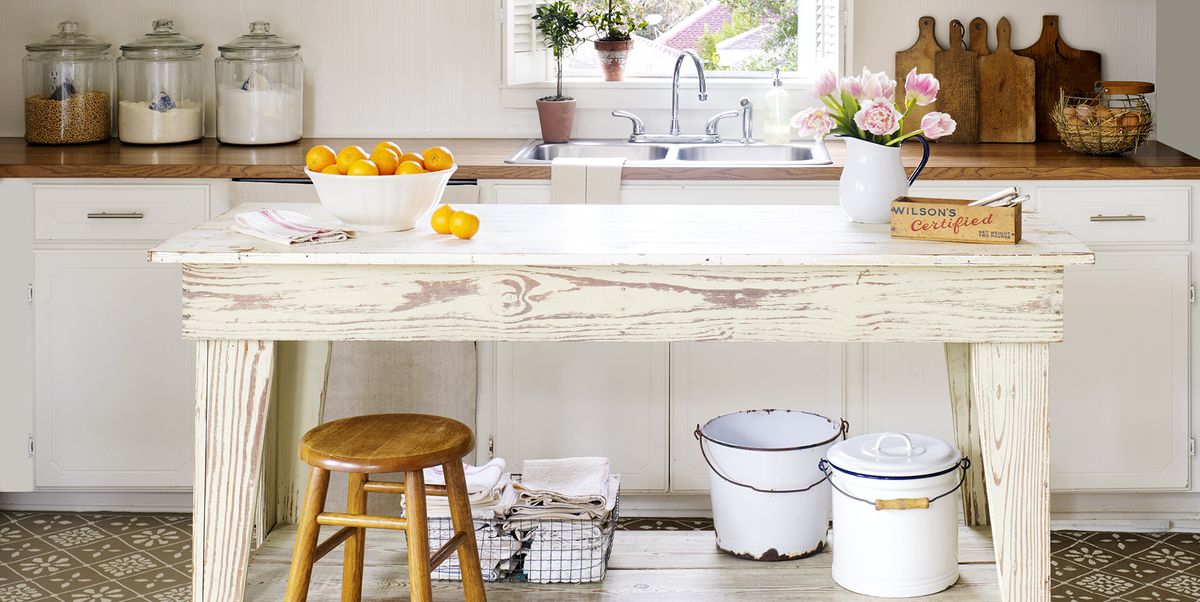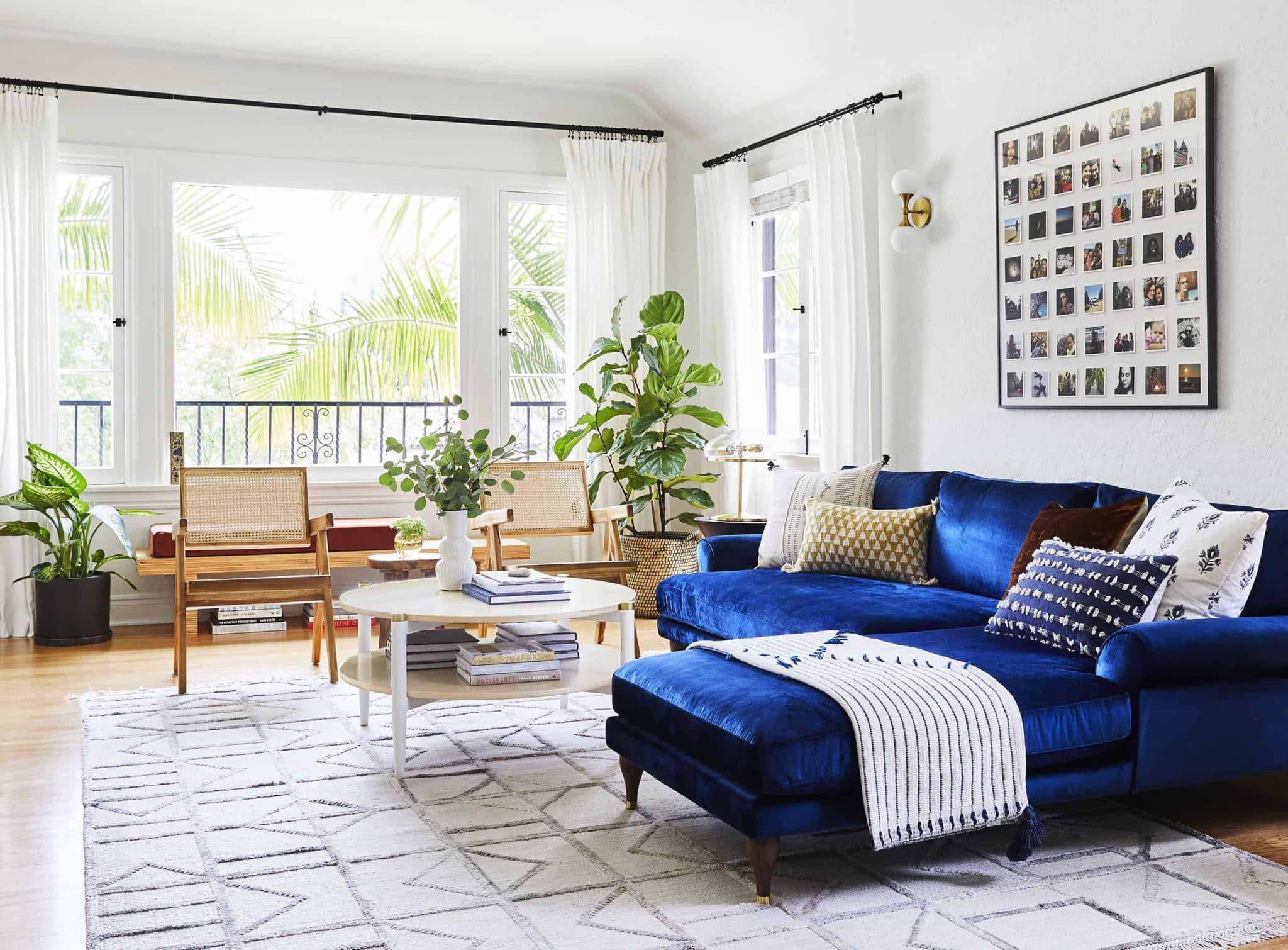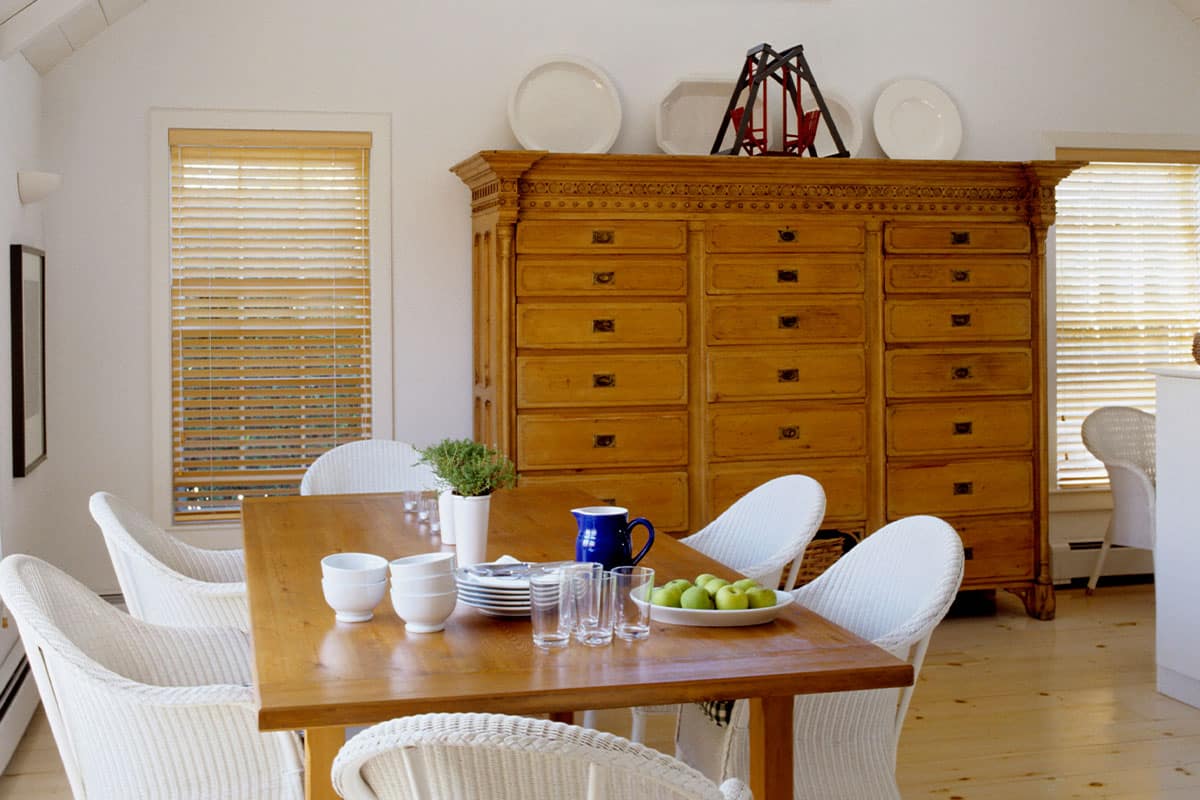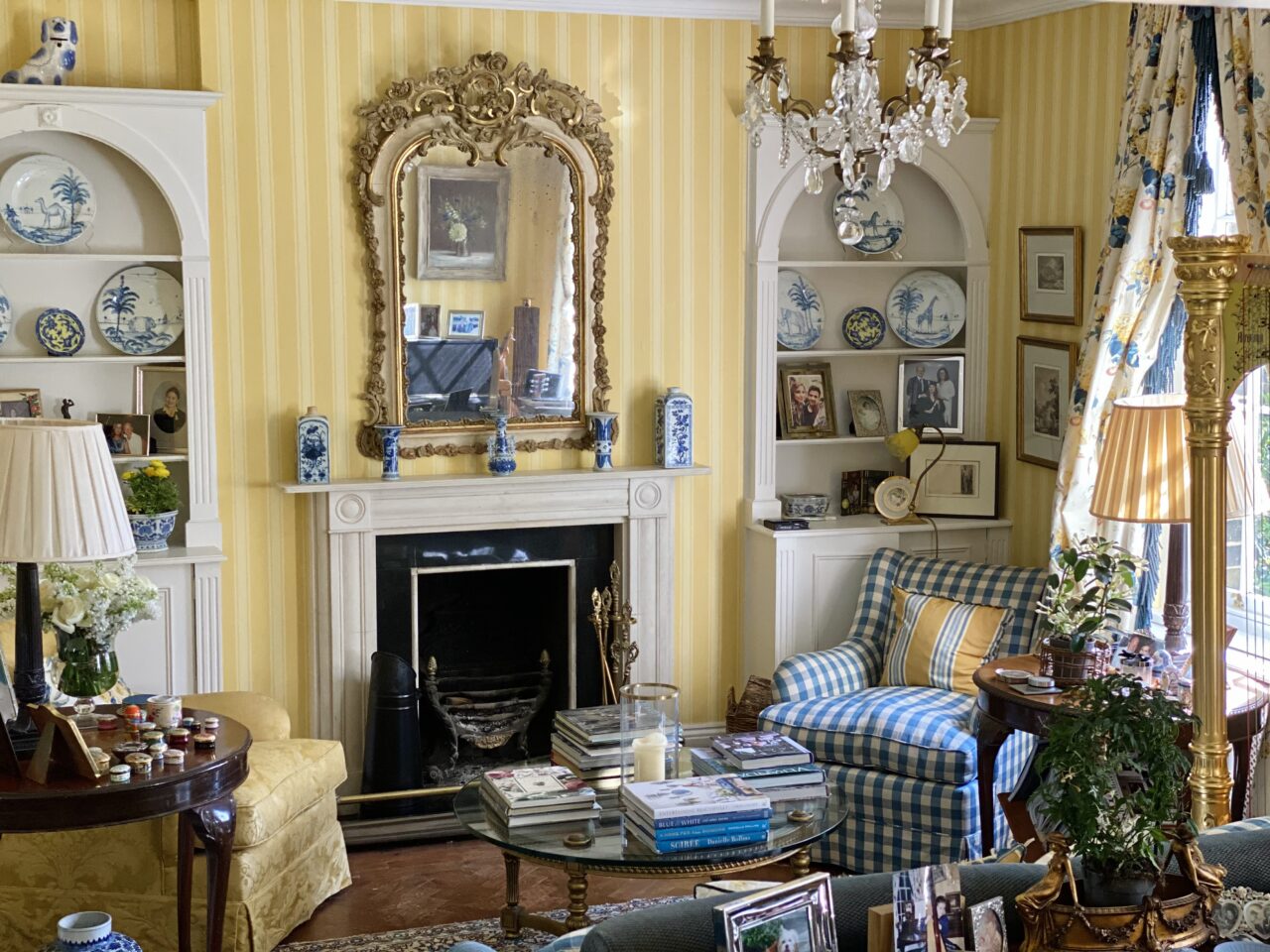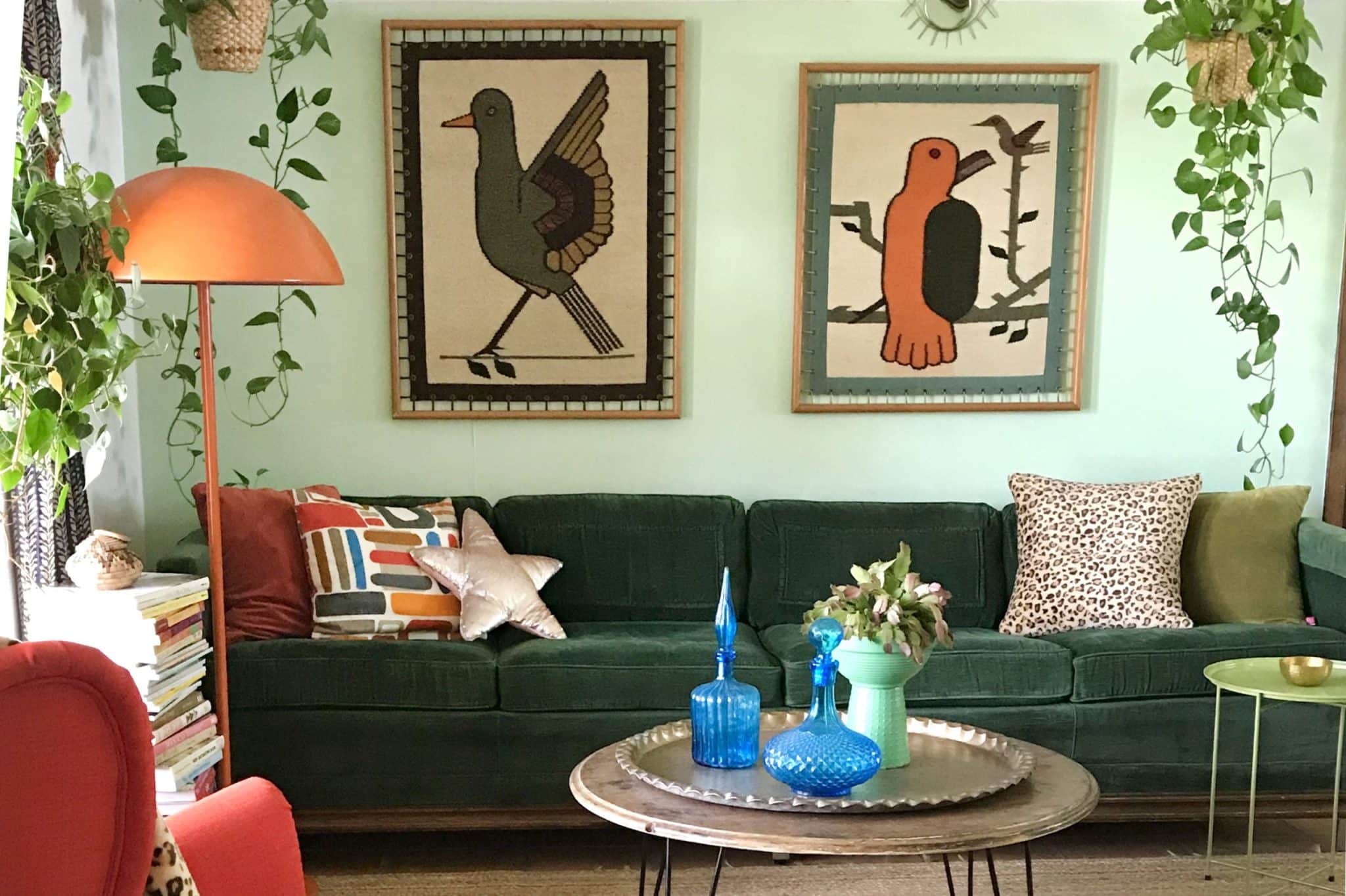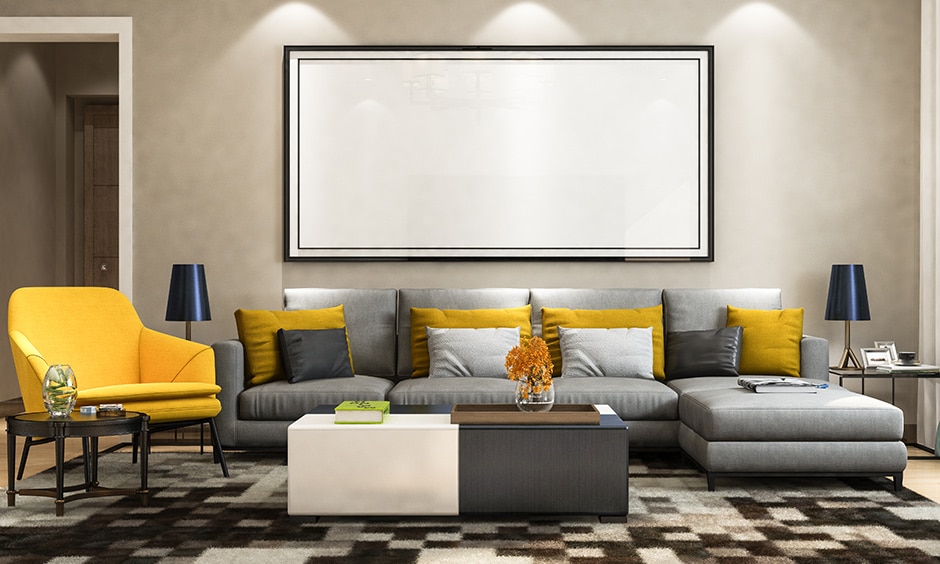Modern Georgian Style House: Design Essentials
Georgian-style homes have a classic charm that mixes old-world beauty with modern needs. Popular in the 18th and early 19th centuries, this style is known for its balanced designs, perfect proportions, and detailed features.
Today, modern Georgian homes update these features with new materials and layouts, making them suitable for today’s lifestyle.
If you’re updating an old house or building a new one, understanding Georgian design can help create a space that’s both beautiful and practical.
In this guide, we’ll look at the key elements of Georgian homes, from their symmetrical exteriors to their modern interiors, and give you tips for making these ideas work in your own space.
Key Features of a Modern Georgian-Style House
The modern Georgian-style house represents an advance approach to building design that flourished during the 18th and early 19th centuries.
Rooted in classical principles and mathematical precision, this designer style emerged as a refined expression of cultural and artistic ideals, reflecting a deep appreciation for balance, order, and visual harmony.
Symmetry: The Foundation of Design
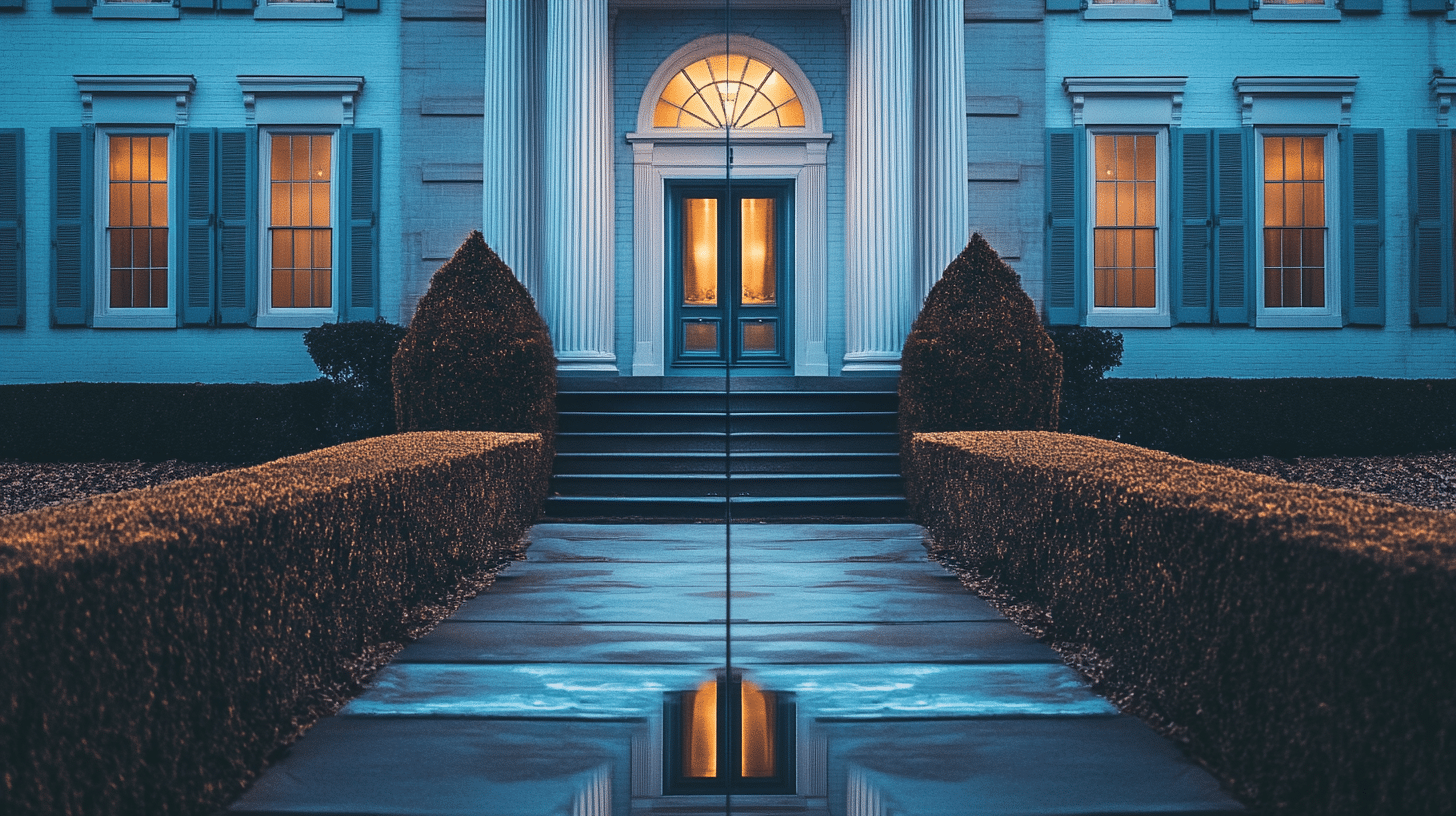
Symmetry is the cornerstone of modern Georgian architecture, encouraging perfect balance. Georgian-style buildings are designed to reflect a strong visual harmony, where each side of the structure mirrors the other. Every detail is carefully planned to create a cohesive, orderly appearance.
- Windows: The placement of windows is mirrored across the facade. Each floor features windows that are evenly spaced and identical in size and shape. This creates a balanced look that is pleasing to the eye.
- Doorways: The front door is typically centered in the building’s facade, making it the focal point of the exterior. On either side of the doorway, windows or architectural features maintain symmetry.
- Rooflines: Rooflines in Georgian homes are typically simple and balanced, with equal heights and proportions on each side. This contributes to the building’s overall symmetry.
- Architectural Elements: Whether it’s the columns, door surrounds, or windows, each element is spaced evenly to uphold symmetry, ensuring the structure looks harmonious from every angle.
Proportion: Mathematical Perfection
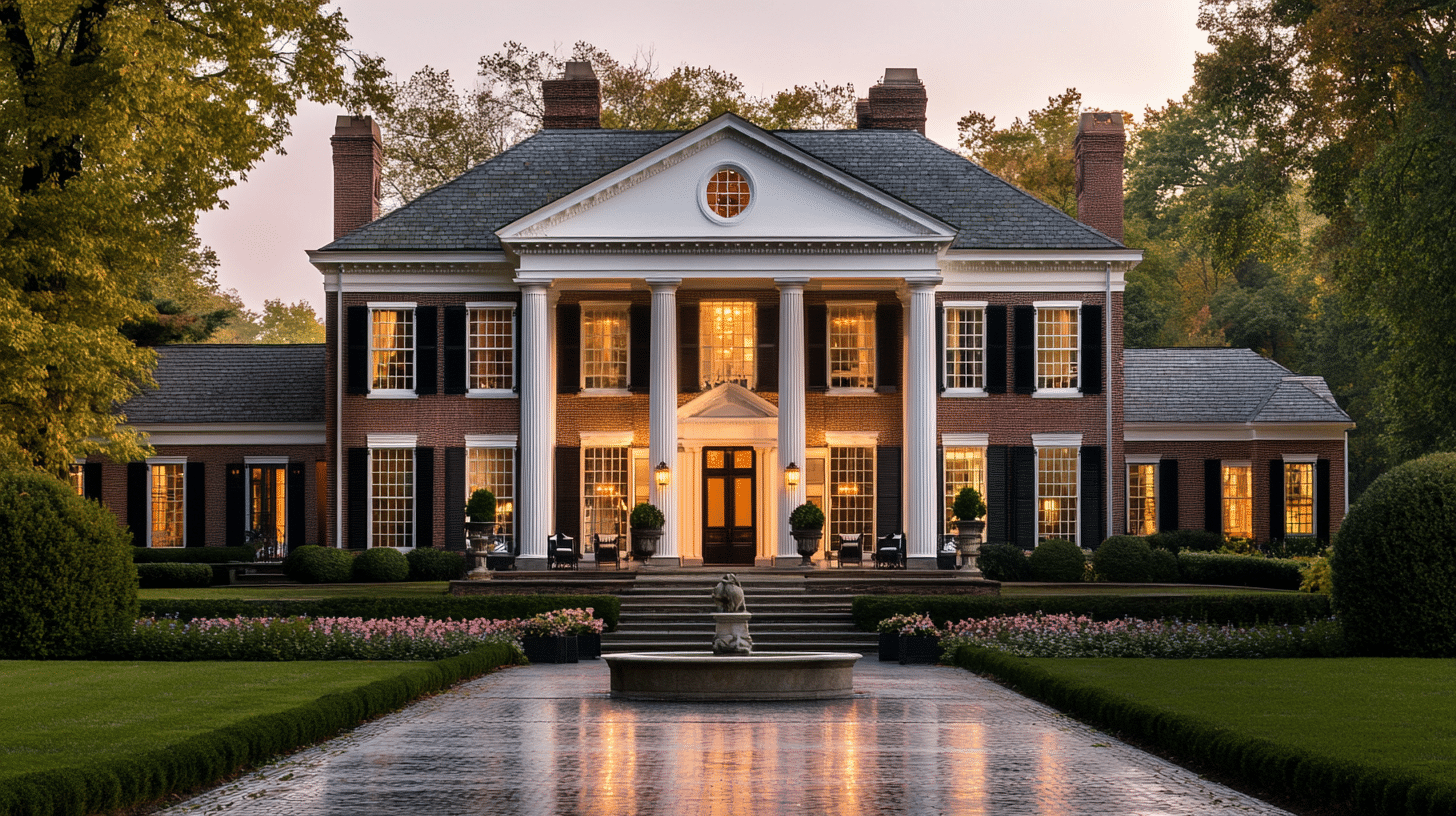
Georgian architecture is deeply rooted in classical proportions, particularly the Golden Ratio, a mathematical formula used for centuries to create balanced and visually pleasing designs. This principle ensures that each part of the house complements the whole, resulting in a refined look.
- Golden Ratio: This ratio (1.618) determines the ideal proportions for windows, doors, and rooms. It ensures that each element of the design feels naturally balanced and proportionate.
- Room Dimensions: Rooms in Georgian homes are designed with proportionality in mind. The height, width, and length of each space are carefully calculated to maintain a sense of harmony throughout the interior.
- Building Shape: The exterior of a Georgian house is shaped using these classical proportions. This often results in a rectangular or square layout, where the length and width of the building are carefully balanced.
- Design Components: The golden ratio extends beyond the basic shape of the house. It influences everything from the distance between windows to the height of ceilings and the spacing of columns, ensuring the structure adheres to these idealized proportions.
Classical Detailing: Refined Beauty
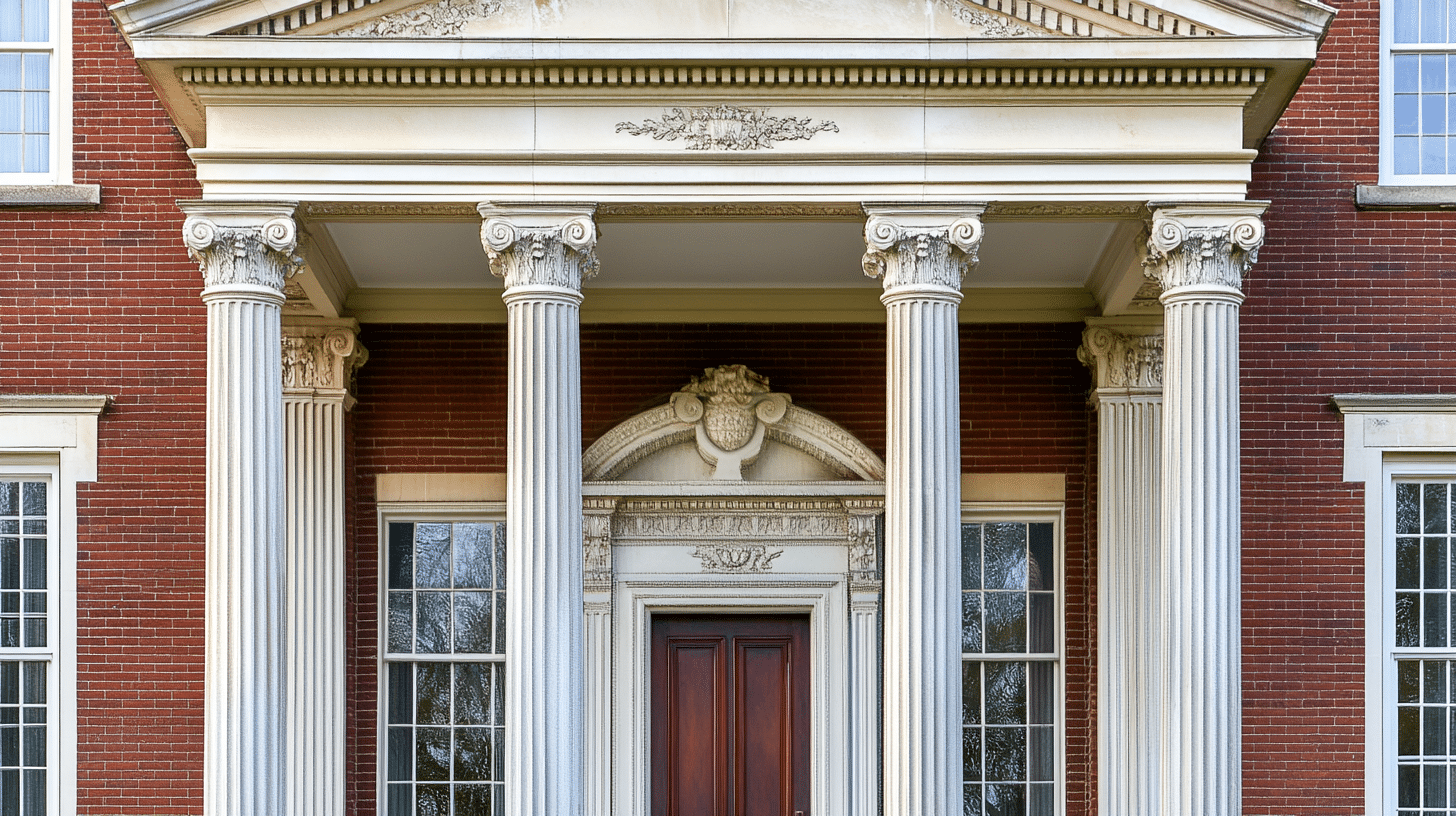
Classical detailing is a hallmark of the Georgian style, bringing elements from Greek and Roman architecture into the design. This not only adds beauty to the exterior but also showcases a deep respect for tradition and craftsmanship.
- Columns: Columns are one of the most recognizable features of Georgian homes. They often feature Doric, Ionic, or Corinthian styles, each with its distinct design and flair. These columns are often used to frame doorways or line the front porch, adding depth and grandeur to the structure.
- Pediments: Above doorways and windows, Georgian houses often feature ornate pediments. These triangular shapes evoke the influence of classical Greek architecture, adding a sense of importance to the building’s entry points.
- Moldings and Trim Work: Intricate moldings and trim work are often used around windows, doors, and ceilings to add depth and visual interest. These details are usually finely crafted and provide a sense of refinement, contributing to the overall beauty of the design.
- Cornices: Cornices, the decorative elements along the roofline, are another key feature in Georgian design. These elements are often carefully sculpted to create a polished look, tying the roof and walls together seamlessly and attractively.
Materials in Georgian Design
Knowing about materials that made Georgian design look beautiful and more durable.
Traditional Materials:
Georgian design relied heavily on brick, stone, and slate. These natural materials change the distinctive, beautiful appearance we associate with Georgian homes.
Brick offered durability and a warm environment, while stone provided strength and prestige. Slate roofing, with its longevity and weather resistance, completed the classic look.
Modern Material Alternatives:
Today’s Georgian-style homes often use composite sidings, PVC trim, poly-ash components, and engineered stone.
These alternatives mimic traditional appearances while offering improved insulation, lower maintenance requirements, better resistance to moisture damage, and often more affordable pricing compared to authentic materials.
Interior Design in Georgian Homes
Georgian homes are known for their beauty and style, and their interior reflects that beautifully.
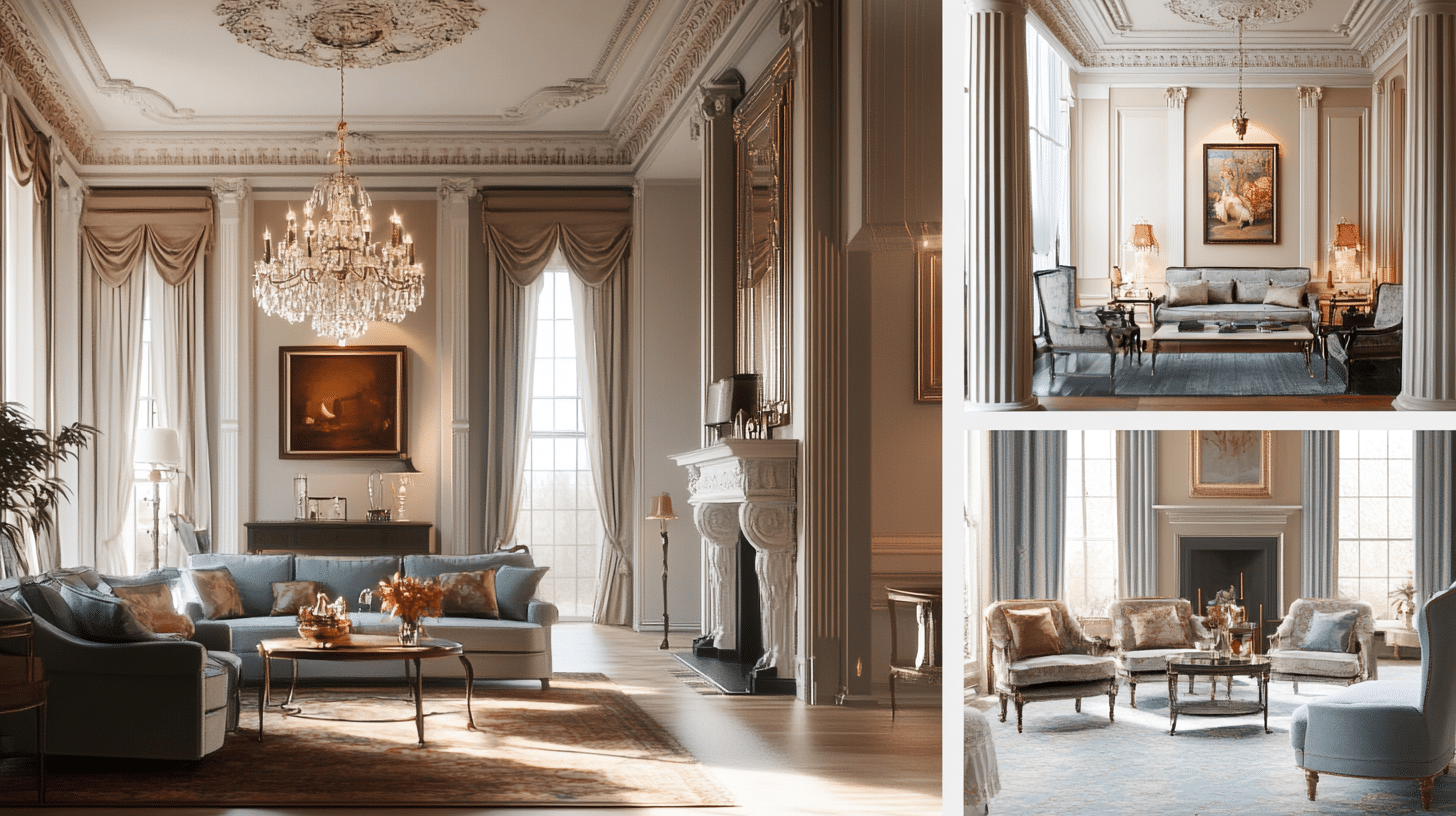
Room Layouts
Georgian homes have a clear layout, with formal spaces like drawing rooms and dining rooms at the front. These rooms make a strong first impression and show the home’s status.
Family areas are usually at the back or upper floors, offering a more relaxed space for daily life. Hallways and staircases separate public and private areas, maintaining a smooth flow.
Ceilings and Trims
Georgian interiors focus on craftsmanship with decorative moldings. Ceilings often feature center medallions or cornices.
Walls display chair rails and picture frames, while crown molding adds interest where walls meet the ceiling. Large baseboards finish the lower walls.
Modern Updates
Today’s Georgian homes blend traditional style with modern needs. The layout stays symmetrical but opens up to improve light and flow.
Kitchens are bigger and connect to family spaces. Traditional moldings are simplified for easier upkeep, while updated trim colors contrast with modern walls.
New homes also include updated lighting, heating, and technology, combining classic charm with comfort for today’s families
Landscaping and Exterior Features
The exterior of the Georgian home is as important as the interior. Let’s know some features.
Symmetrical Gardens and Outdoor Living Spaces: Georgian homes feature balanced garden layouts that mirror the home’s symmetry.
Front yards often have matching paths leading to the central entrance. Backyard spaces include patios for outdoor meals and sitting areas placed in balanced formations.
These ordered outdoor rooms extend the formal qualities of the home into the landscape.
Indoor-Outdoor Connection: Georgian landscaping creates smooth transitions between home and garden. Formal boxwood hedges outline garden sections, while straight stone walkways guide movement.
Well-placed ornamental trees frame views from the windows. French doors open to terraces, linking interior rooms with matching outdoor spaces.
This thoughtful arrangement helps the garden feel like a natural extension of the home.
Room-by-Room Modern Georgian Design Tips
Living Room
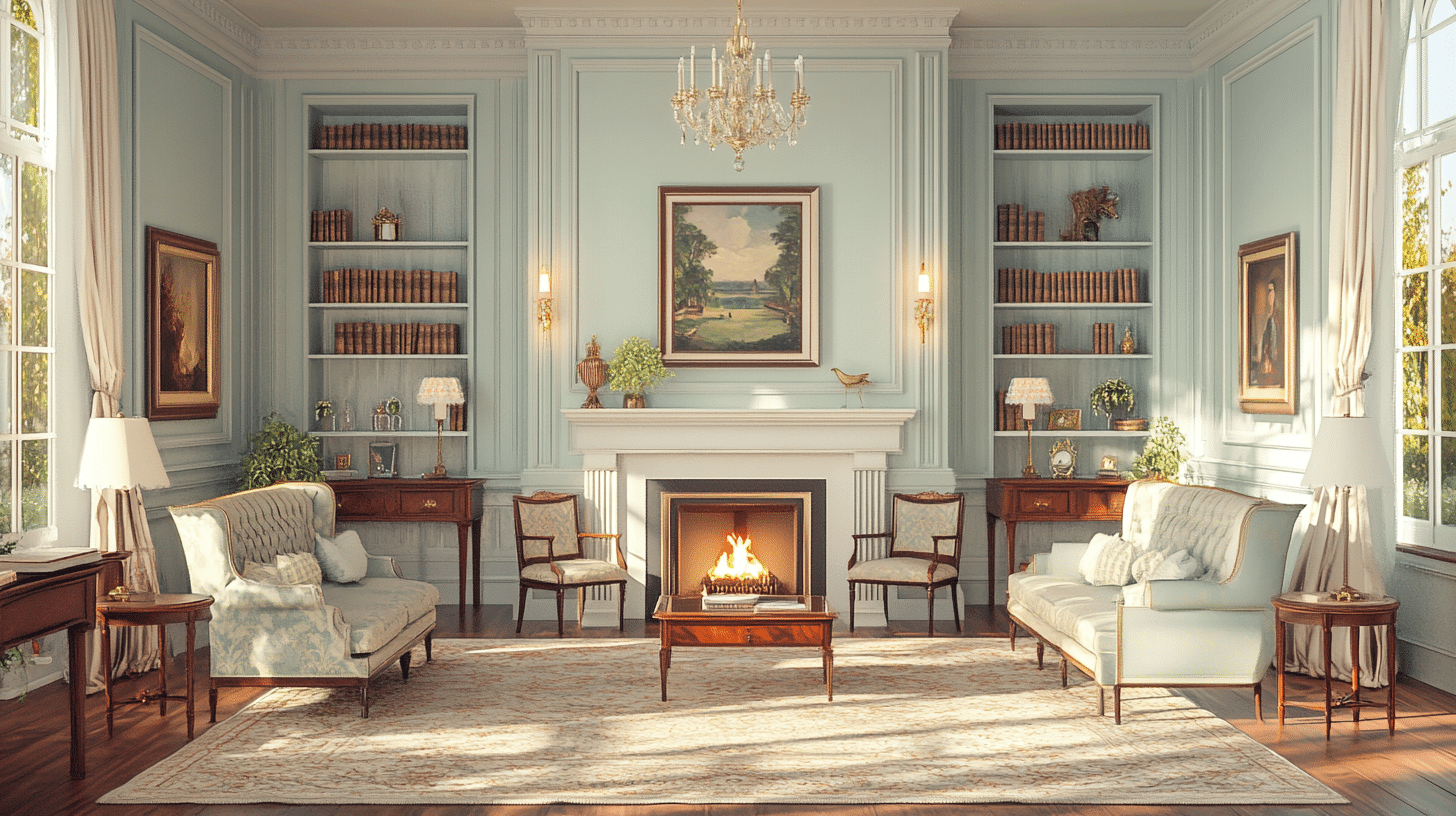
Create balance with asymmetrical furniture. Place matching sofas across from each other or identical armchairs on either side of the fireplace. If there’s no fireplace, use a large piece of art or a console table between windows.
Make the fireplace the focal point with a simple white surround and a mirror or artwork above. Use a central chandelier to draw attention upward, adding wall sconces for soft light.
To keep things balanced, add table lamps on matching side tables. Choose furniture with straight lines or subtle curves, avoiding overly ornate pieces. Warm up the space with wood tones in flooring, tables, or bookcases.
Bedroom
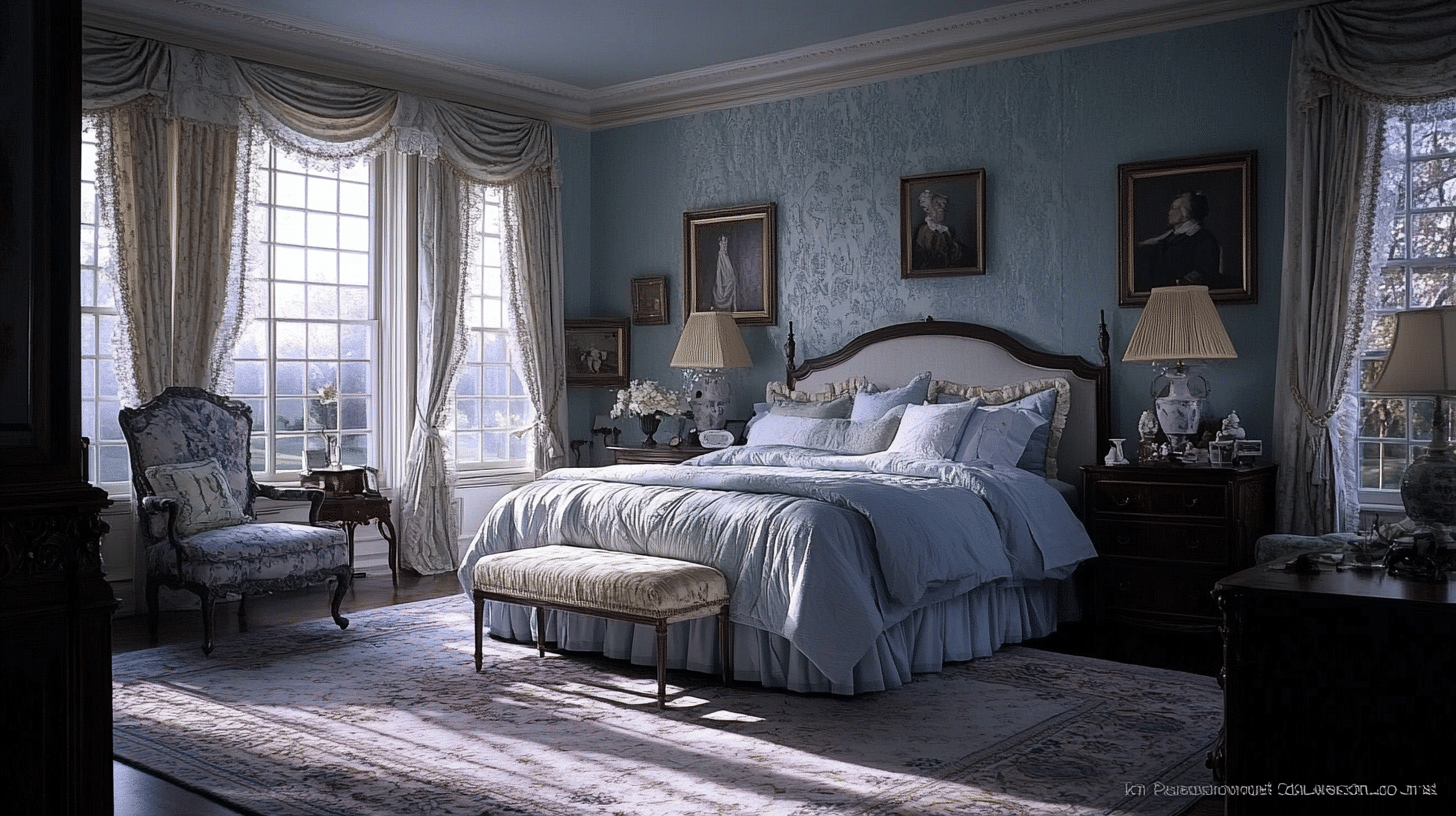
For a peaceful bedroom, use soft blues, greens, or warm grays on the walls. Center the bed on a wall with matching nightstands and lamps for balance.
Opt for quality bedding with subtle patterns or textures, and avoid excessive decoration. Hang floor-length curtains with simple headers, and keep them free of fussy details.
Add a small bench at the foot of the bed or a reading chair in the corner for function. Keep accessories minimal but meaningful, focusing on quality materials for a refined and comfortable retreat.
Dining Room
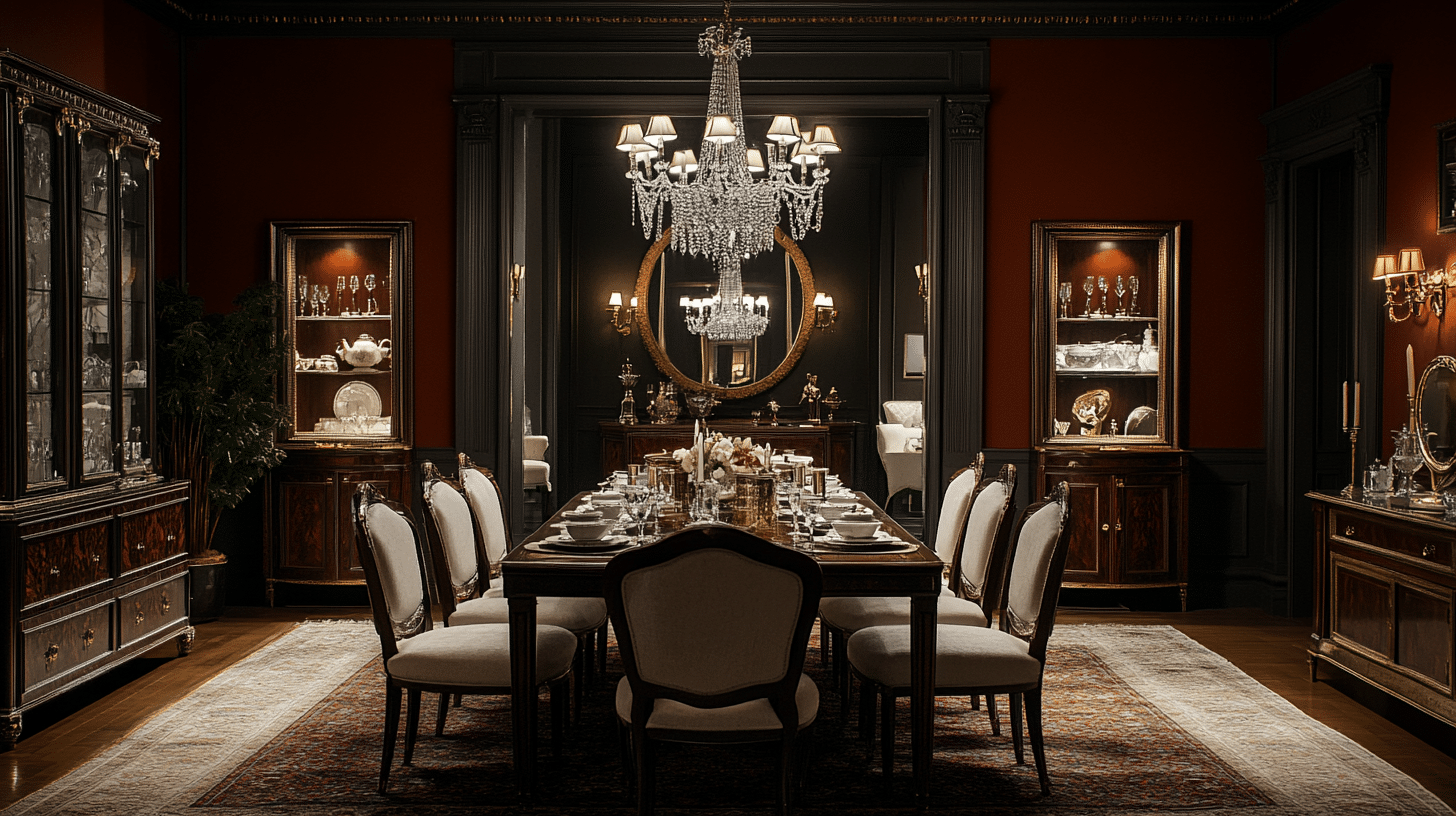
Place the dining table in the center under a chandelier, with matching chairs around it. Add a sideboard against one wall for storage and serving space.
Consider glass-front display cabinets for showcasing dishware. Use deeper wall colors, like reds, greens, or navy blues, for a formal feel.
Hang a large mirror to reflect light and expand the space. Keep table settings simple with white linens, classic dishware, and a centerpiece like silver candlesticks or flowers.
The room should feel both special and practical for everyday meals and entertaining.
Color Palettes in Modern Georgian Interiors
Modern Georgian interiors use modern color palettes but give a classic vibe.
Bold and Muted Tones
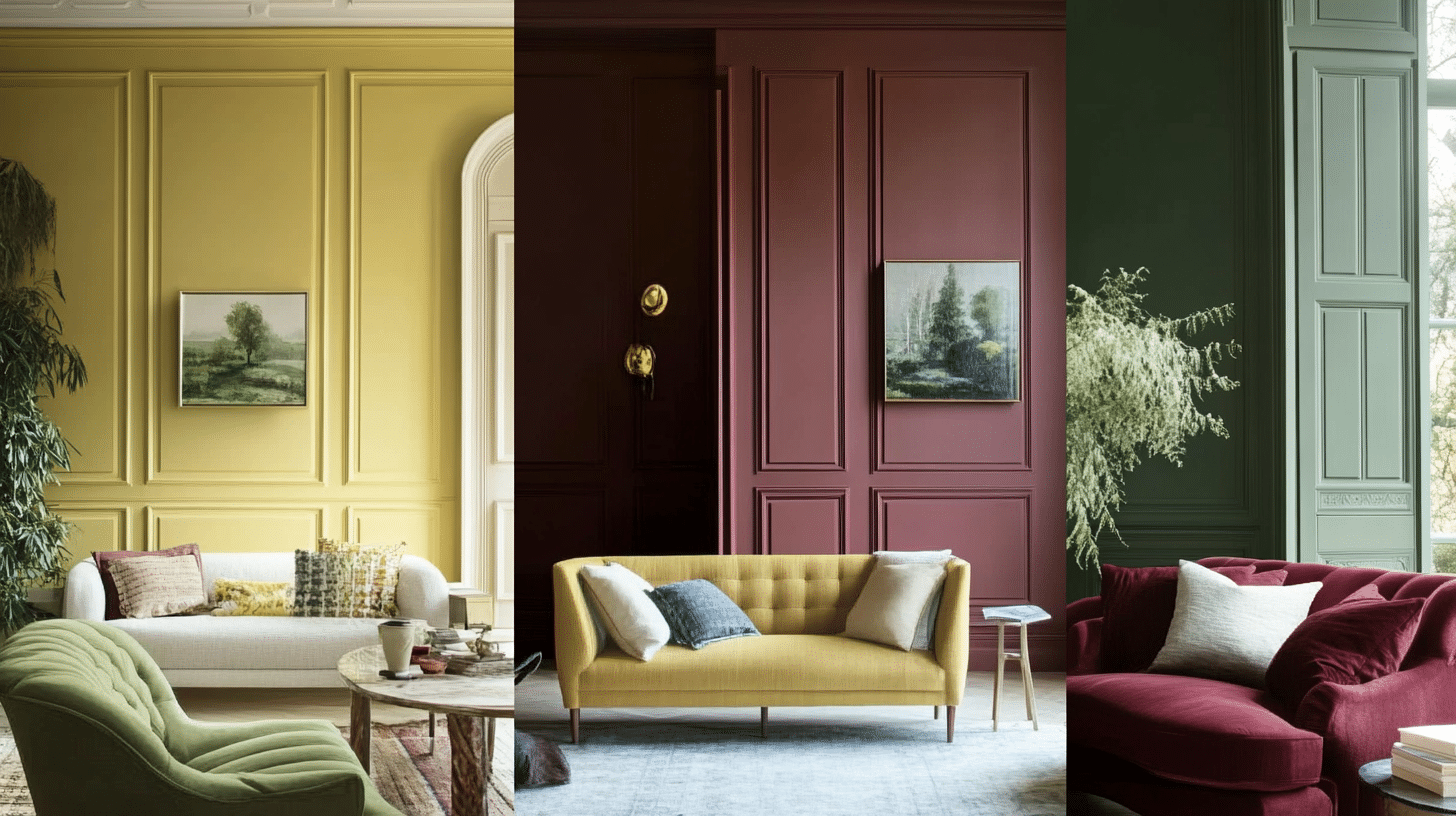
Modern Georgian interiors balance bold colors with soft shades. Bright yellows add cheer to formal spaces, while deep greens bring calm to dining rooms and libraries.
Rich burgundies, warm bedrooms and studies, and soft neutrals like cream and pale blue form the home’s base.
These combinations honor Georgian tradition while staying fresh.
Stronger colors are used on feature walls, with neutrals connecting rooms. Woodwork and trim are typically white or off-white, creating clean lines against the walls.
Popular Modern Colors
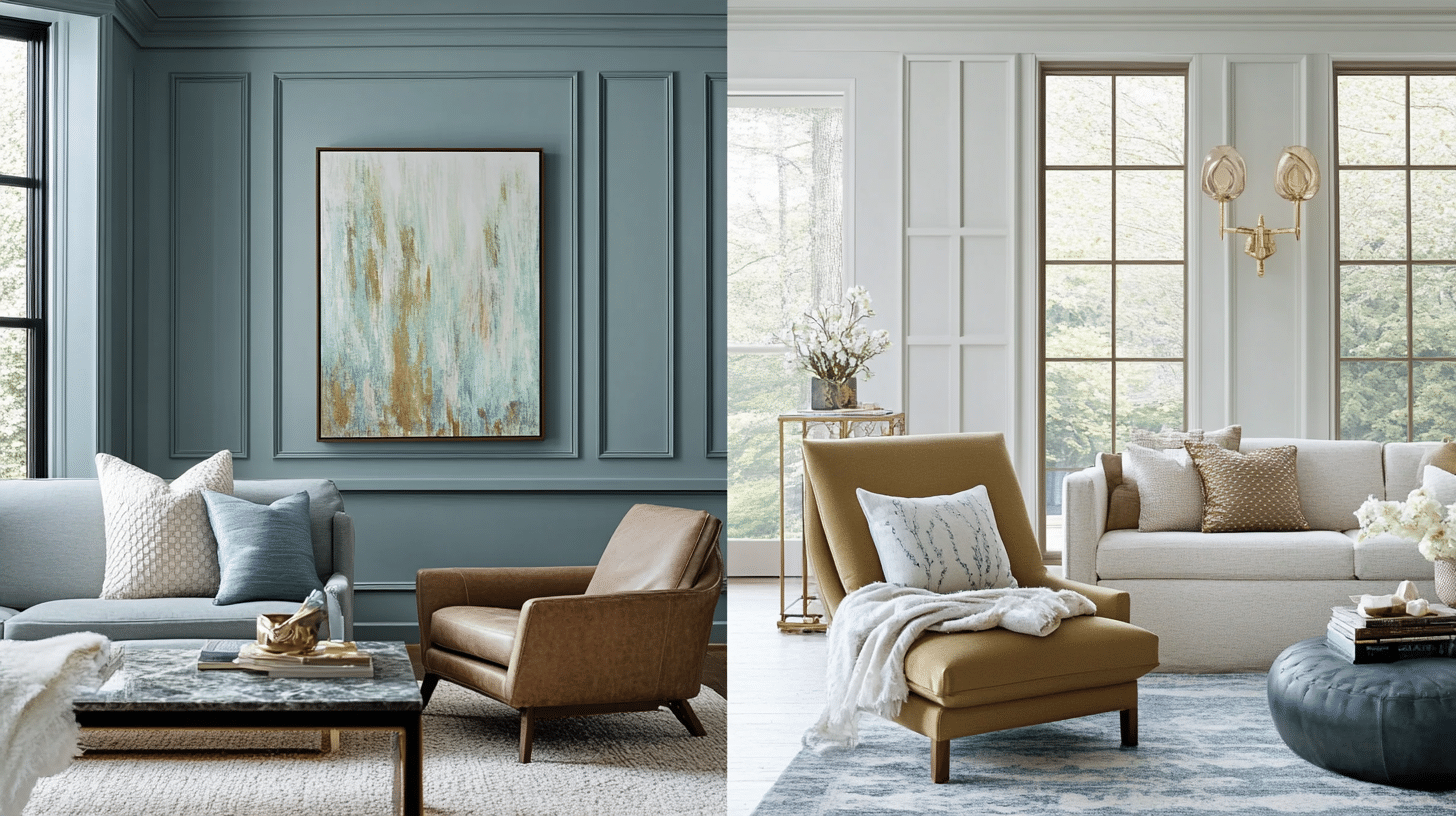
Today’s Georgian-style homes update traditional colors with modern shades.
Egyptian Grey, a warm gray with brown undertones, works well on walls in main living areas. Honest John, a muted blue-green, brings calm to bedrooms and bathrooms.
Gold accents in hardware, lighting, and decor add richness without overwhelming the space.
These colors blend Georgian heritage with modern furnishings, creating a timeless feel. They look especially good in homes with plenty of natural light, subtly shifting throughout the day.
Furniture and Decor for Modern Georgian Homes
Period Furniture
- Chippendale chairs with curved backs are perfect for dining or pieces.
- Use one quality piece, like a sideboard or desk, as a room’s focal point.
- Pair formal furniture with simpler pieces for balance
Modern Touches
- Choose linen or cotton fabrics for a fresh, modern look.
- Lighter wood finishes brighten traditional furniture.
- Add glass-topped tables and clean-lined lighting for contrast
DIY Ideas
- Replace plain furniture feet with ball feet and rich stains.
- Add wooden appliques to cabinet doors for a Georgian touch.
- Paint thrift store finds in deep red or navy and arrange them symmetrically.
Integrating Natural Textures in Georgian Design
Georgian homes can include natural elements while keeping their classic style.
Floral Patterns:
Botanical prints in simple gold frames add a fresh, organic touch to a room without overwhelming it. In smaller spaces, subtle floral wallpaper introduces a soft, natural element while keeping the atmosphere calm.
Embroidered cushions with plant designs are an excellent way to include floral patterns. They add texture and interest while keeping the overall look understated. Fresh flowers in classic containers, like vases or ceramic jars, add an extra touch.
The key is to keep floral patterns balanced and appropriately sized for the room, enhancing the space without taking over.
Natural Textiles:
Natural textiles are key to creating a warm, inviting space. Linen curtains that touch the floor create a soft, airy feel. Wool rugs with traditional patterns in updated colors combine comfort and timeless design.
Upholstery in cotton or linen fabrics, either solid or subtly striped, adds a relaxed yet refined look. Sisal or seagrass flooring works well in casual areas, offering a natural, textured base.
Raw silk accents throughout can add richness and texture. When layering materials, keep a cohesive color scheme to make sure each piece complements the others.
Wood Accents:
Wood accents bring warmth and timelessness. Wide-plank hardwood floors in medium to dark tones create a strong, natural foundation.
Exposed ceiling beams can highlight architecture and add rustic charm. Wooden shelves or furniture pieces emphasize the material’s natural beauty.
Balance different wood tones to avoid a flat look. Mixing light and dark finishes over time creates a collected feel, enriching the design while providing comfort and authenticity.
Balancing Tradition with Modern Needs
Learning how to balance traditions without hampering our modern needs.
Merging Traditional Structure with Modern Elements:
- Use Georgian symmetry as your foundation
- Place contemporary art within traditional frameworks
- Update classic furniture with current materials
- Mix periods thoughtfully for visual interest
Adapting for Contemporary Living:
- Convert formal rooms into functional family spaces
- Create open sight lines while maintaining defined areas
- Scale furniture for modern comfort
- Incorporate technology discreetly
- Design kitchens and bathrooms with Georgian proportions but modern fixtures
The most successful Georgian-inspired homes maintain about 70-80% traditional elements with 20-30% modern updates, creating spaces that feel both historically grounded and perfectly suited to today’s lifestyle.
Conclusion
Georgian design is still loved for its balance, proportion, and quality craftsmanship. By adding these lasting elements to a modern home, you can create a space that feels both classic and practical.
From the symmetry of the layout to the materials and furniture choices, Georgian style gives you a solid foundation for a beautiful home.
With the right mix of traditional features and modern updates, you can enjoy a home that looks great and works well for daily life.
Want to learn more about home design and decor? Check out other similar blogs on our website for more helpful tips and inspiration.

